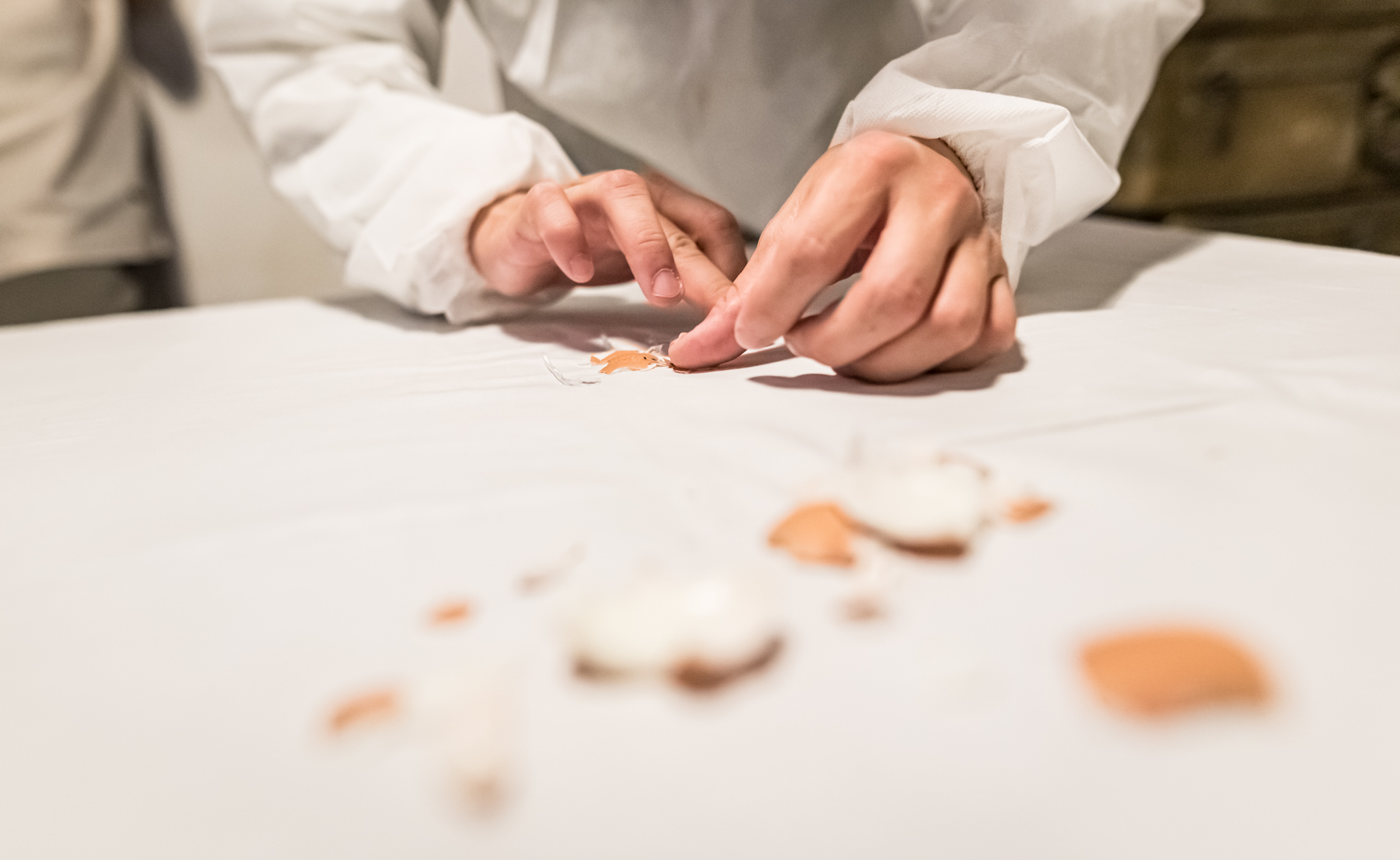Exhibition

Come Closer: Biennale Matter of Art 2020
| Where: | Various locations |
| When: | 22.07.2020—15.11.2020 |
⟶ Participants
⟶ Information and venues
The first edition of the Biennale Matter of Art entitled Come Closer communicates emotional and physical experience that is both ambivalent and complicated. Come closer, the selected works tell us, but this closeness can be uncomfortable. The exhibition recalls the concept of the pedagogy of discomfort, which focuses on ambivalent emotions and holds that they play a central role in questioning dominant ideologies and social habits. Emotional discomfort can lead to a new emotional understanding of how to live with others. Come Closer asks us to engage in physical and mental closeness. It can be a sentence spoken by an adult to a small child, it can be an erotic come-on or a friendly invitation, but it can also be a threat. Encounters can play out in the spirit of mutual understanding just as well as fundamental misunderstanding. Closeness and empathy, the exhibition’s two main themes, are basic human needs and expressions of caring, of the emotional work we perform for others and for ourselves.
Can art mediate experience across class, gender, and cultural lines? Is it possible to emotionally and sensually feel someone else’s experience, someone with whom we have nothing in common? Can we share an experience that, by its very essence, is alien to us because we come from a different socio-cultural environment and have different experiences? The exhibition presents events that directly or indirectly affect us all, that are universal but that at the same time do not hide (and sometimes even emphasize) the fact that they are based on culturally, economically, and socially defined experiences. All this is done with an awareness that galleries and museums traditionally prefer some types of experience while suppressing or ignoring others.
The world of art and culture is not innocent. It is shaped by the social conditions in which art and culture are made. It reflects economic, gender, and power relations, geography, national identity, the dominance of centers of culture (their institutions and ideologies), the art market, or the criteria of the mainstream media. All these forces shape art, and art must come to terms with them in a critical manner. Come Closer explores them using alternative tactics founded on emotionality and inclusivity. Inspiration for this way of thinking can come from the notion of a third position, the search for an alternative in a world that offers only two antithetical viewpoints. Examples include the Non-Aligned Movement during the Cold War, the frequently cited concept of a third path, the idea of a third gender, or the magazine Third Text. One specific example of such a “third voice” in the field of art was the status of social realism in Indonesia and the Philippines. In these two countries, social realism found itself in the role of a forbidden art form, while Western abstraction and conceptualism helped the authoritarian regimes to pretend a pro-Western, democratic orientation. Such historical examples stand in sharp contrast to the experience in Eastern Europe, which after 1989 saw realism as dead pro-regime propaganda and looked to Western European avant-garde art as the sole driving force of universal history. Similar “third voices” complicate the values we were raised with or even cause them to crumble. The spirit of our time is born of similar contradictions. It can be found in the decaying relationships of the old world, in the scars that have been carved into our present day. These scars are formed mostly on the margins, except that today they are all around us, even in the center, including the capitals of the old centers of western civilization. They take the form of racial discrimination, environmental crises, and society’s inability to deal with the refugee crisis or the viral pandemic. Images mediate these changes directly, especially if they do so not only rationally but fully and completely, meaning on an emotional level as well. And the art movements that respond to this phenomenon, for instance by reassessing realism on the level of the language of art (social realism, neorealism, cinema vérité, fukeiron, New Realism, documentary realism, etc.) do so not just for the sake of it, but to offer us new ways of seeing. (Tereza Stejskalová & Vít Havránek, curators of the exhibition)